
March of Time (2023) by Pedro Maia
Friday, August 30, 2024, 9:30 pm
CROSSROADS 2024 – program 2
we spoke of dust
Lyrical contemplations of land and landscape, human and non-human history and malleability of memory and the bidirectionality of history. Dulcet snapshots of the synanthropic Anthropocene bookended by pensive retrospections on colonial legacies (including the occupation of Alcatraz). Truths are discovered, songs are remembered and forgotten as the rocks crumble.
SCREENING:
Heat Spells (2023) by Sarah Ballard (US); digital video, color, sound, 9 minutes. Crow Canyon (2024) by Michael Damm (US); digital video, color, silent, 4 minutes. emergence (2024) by Margaret Rorison (US); digital video, black & white, sound, 2 minutes. Species of Analogy (2024) by J.M. Martínez (US); digital video, color, sound, 13 minutes. Dystans (2024) by Antoni Orlof (Poland); digital video, color, silent, 10 minutes. Seasonal Concerns (2024) by Maximilien Luc Proctor (France/US); 16mm screened as digital video, color, silent, 3 minutes. March of Time (2023) by Pedro Maia (Portugal); digital video, color, sound, 12 minutes. Sunflower Siege Engine (2022) by Sky Hopinka (Ho-Chunk/Pechanga); digital video, color, sound, 12 minutes, exhibition file from Video Data Bank. TRT: 66 minutes
PROGRAM TICKETS: $12 General/$10 Cinematheque Members, Gray Area Members & students (with ID)
FESTIVAL PASSES: $110 General/$88 Cinematheque Members, Gray Area Members & students (with ID)
program community partner: BAVC Media
← 1 2 3 4 5 6 7 8 9 10 →
CROSSROADS 2024

Heat Spells (2023) by Sarah Ballard
Tourism as the eternal reenactment of Manifest Destiny. The Fountain of Youth as a myth that forever underwrites the American Dream. A mythology has forever changed the landscape of St. Augustine, Florida. As legend and history conflate and obscure the imperialist motivations behind Ponce de León, the film responds by embodying the feverish experience of the “explorer’s” search for eternal youth, an act that parallels the compulsory capture inherent in tourist photography. (Sarah Ballard) bay area premiere
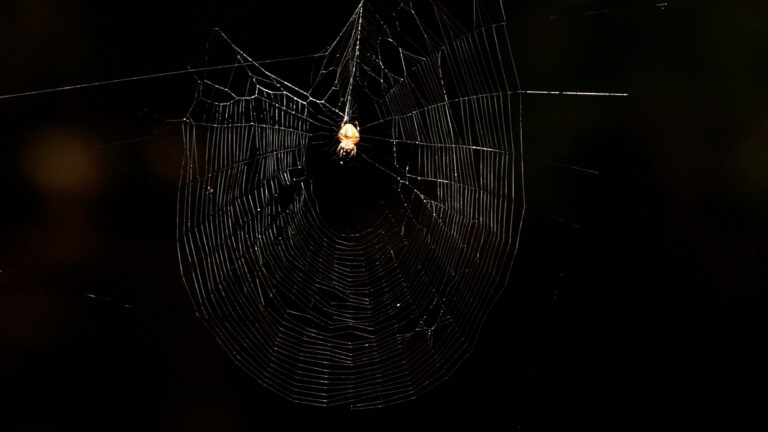
Crow Canyon (2024) by Michael Damm
Filmed in suburbs east of San Francisco Bay, this lyric documentary of the urban/wildland interface is populated by synanthropic animals, myriad native and introduced species of trees and insects and the incidental movement of light and water. It’s a nature film that is also a city film. Silent and without text, it manifests solely as the interplay of shots, cuts and the space of the illuminated screen. This is one of six films that are part of a larger project about the San Lorenzo Creek watershed. (Michael Damm) world premiere

emergence (2024) by Margaret Rorison
A series of summer occurrences, an observation of life cycles. Shot on 16mm b&w reversal film and hand-processed by the artist. (Margaret Rorison) bay area premiere

Species of Analogy (2024) by J.M. Martínez
A field guide: Flora evolving with environmental changes and pollinators utilizing biomimicry. Natural objects are gathered and sculptures of and from the landscape cast reflections of nature being infinite, self-knowing and alive. Extinct species and stages of evolution are suggested, accompanied by field recordings capturing the underground soundscape of soil. Bird calls and wingbeats offer greetings and warnings—a rock, a tree, a human—each dissolving into matter and transmuting into new forms. (J.M. Martínez) world premiere

Dystans (2024) by Antoni Orlof
Distance traveled, distant friends, hopes and dreams. Time spent waiting quietly. A sense of incoming change. (Antoni Orlof) north american premiere
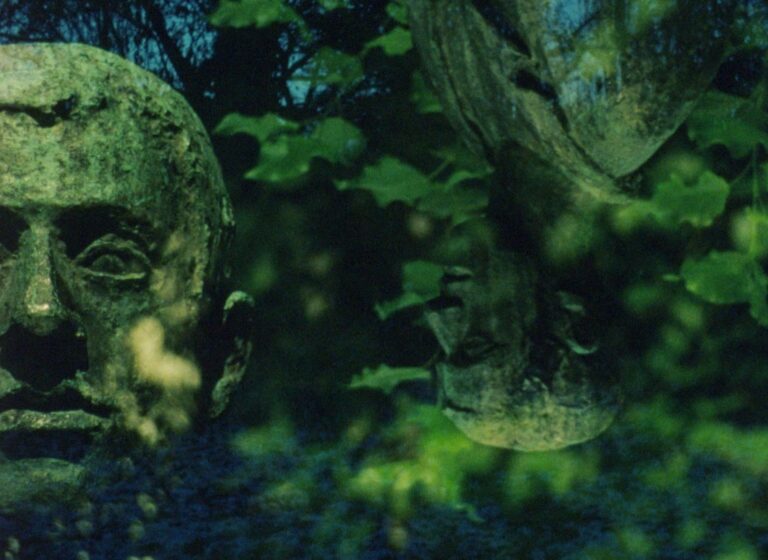
Seasonal Concerns (2024) by Maximilien Luc Proctor
A triple exposure on EXR 50D 16mm film: two layers shot in summer and the third captured on the cusp of winter. A collection of statues fading in and out of consciousness, around the Weissensee lake in northeast Berlin. (Maximilien Luc Proctor) bay area premiere

March of Time (2023) by Pedro Maia
This work refers to the progression, regression and evolution of time. It alludes to the idea that while time moves forward, bringing change and advancements with it, it also moves backwards, erasing the potential for new experiences. Moving away from the physical manipulation of film material that is a foundation for his work, Pedro Maia transitions to using machine learning algorithms to create a “third analogue,” i.e. a replica, of the past. This body of work, then, signifies a break with linear history: it explores a transition from seeing time as traces on decaying film to a passage of time provoked purely in the imagination, pushed forward by frontier technology. (Pedro Maia) north american premiere

Sunflower Siege Engine (2022) by Sky Hopinka
Moments of resistance are collapsed and woven together; from documentation of the Indigenous led occupation of Alcatraz, to the reclamation of Cahokia and the repatriation of the ancestors, to one’s reflections on their body as they exist in the world today, these are gestures that meditate on the carceral inception and nature of the reservation system and where sovereignty and belligerence intersect and diverge. (Sky Hopinka) bay area premiere
 Sarah Ballard (US) is a filmmaker and educator raised in Northeast Florida and currently based in Milwaukee. Her work has screened at venues and festivals including CROSSROADS, Antimatter [Media Art], Alchemy Film and Moving Image Festival, Light Matter Experimental Film and Media Arts Festival, San Diego Underground Film Festival, Engauge Experimental Film Festival, Onion City Experimental Film Festival and the Milwaukee Underground Film Festival, among others. She holds an MFA in Cinematic Arts from the University of Wisconsin-Milwaukee and a BFA in Film Production from the University of Central Florida. Sarah is a recipient of the 2023 Princess Grace Award in Film and is currently a Lecturer in the Department of Film, Video, Animation and New Genres at UW-Milwaukee.
Sarah Ballard (US) is a filmmaker and educator raised in Northeast Florida and currently based in Milwaukee. Her work has screened at venues and festivals including CROSSROADS, Antimatter [Media Art], Alchemy Film and Moving Image Festival, Light Matter Experimental Film and Media Arts Festival, San Diego Underground Film Festival, Engauge Experimental Film Festival, Onion City Experimental Film Festival and the Milwaukee Underground Film Festival, among others. She holds an MFA in Cinematic Arts from the University of Wisconsin-Milwaukee and a BFA in Film Production from the University of Central Florida. Sarah is a recipient of the 2023 Princess Grace Award in Film and is currently a Lecturer in the Department of Film, Video, Animation and New Genres at UW-Milwaukee.
 Michael Damm (US) is an artist and filmmaker living in San Francisco, California. His recent films are inspired by trail cam footage and citizen science, and observe that the urban/wildland interface can be anywhere a pigeon makes a nest. Previous screenings and exhibitions of his work have taken place at: Hosfelt Gallery (2024), CROSSROADS 2023, SF Camerawork (2016), Recology San Francisco (2013), Douglas F. Cooley Memorial Art Gallery (Reed College, 2008), David Cunningham Projects/Invisible Venue (San Francisco/Oakland, 2008), Belkin Satellite (Vancouver, 2007), BBC Big Screen (Manchester UK, 2005), Plus Kunst (Dusseldorf, 2002), The Lab (San Francisco, 1996) and Southern Exposure (San Francisco, 1994).
Michael Damm (US) is an artist and filmmaker living in San Francisco, California. His recent films are inspired by trail cam footage and citizen science, and observe that the urban/wildland interface can be anywhere a pigeon makes a nest. Previous screenings and exhibitions of his work have taken place at: Hosfelt Gallery (2024), CROSSROADS 2023, SF Camerawork (2016), Recology San Francisco (2013), Douglas F. Cooley Memorial Art Gallery (Reed College, 2008), David Cunningham Projects/Invisible Venue (San Francisco/Oakland, 2008), Belkin Satellite (Vancouver, 2007), BBC Big Screen (Manchester UK, 2005), Plus Kunst (Dusseldorf, 2002), The Lab (San Francisco, 1996) and Southern Exposure (San Francisco, 1994).
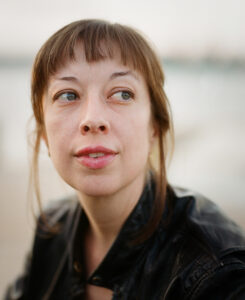 Margaret Rorison (US) is a filmmaker, projectionist, educator and curator from Baltimore MD. Her work aims to support and preserve contemporary filmmakers and film culture. Her current work focuses on portraiture, memory and the precarity and beauty of nature. Her work has been exhibited at Anthology Film Archives, Miami PULSE Art Fair, Microscope Gallery, The Museum of The Moving Image, The National Gallery of Art, and The Walker Art Center. Her short films have shown at festivals including The Ann Arbor Film Festival, Edinburgh International Film Festival, Images Festival, CROSSROADS, Open City Documentary Film Festival and Mono No Aware Cinema Arts Festival. Rorison works as an audiovisual specialist for the Film Programs at The National Gallery of Art in Washington, D.C.
Margaret Rorison (US) is a filmmaker, projectionist, educator and curator from Baltimore MD. Her work aims to support and preserve contemporary filmmakers and film culture. Her current work focuses on portraiture, memory and the precarity and beauty of nature. Her work has been exhibited at Anthology Film Archives, Miami PULSE Art Fair, Microscope Gallery, The Museum of The Moving Image, The National Gallery of Art, and The Walker Art Center. Her short films have shown at festivals including The Ann Arbor Film Festival, Edinburgh International Film Festival, Images Festival, CROSSROADS, Open City Documentary Film Festival and Mono No Aware Cinema Arts Festival. Rorison works as an audiovisual specialist for the Film Programs at The National Gallery of Art in Washington, D.C.
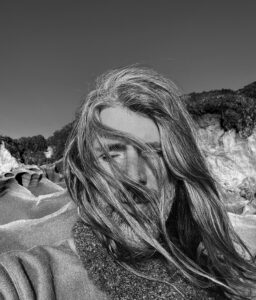 J.M. Martínez (US) is an artist based in the Santa Cruz Mountains of California, working with film, video, sound and sculpture. His works highlight art forms found in nature and the interconnected relationships of species within an evolving landscape.
J.M. Martínez (US) is an artist based in the Santa Cruz Mountains of California, working with film, video, sound and sculpture. His works highlight art forms found in nature and the interconnected relationships of species within an evolving landscape.
 Antoni Orlof (Poland), born in 2002, is a filmmaker based in Warsaw, Poland. His artistic practice explores the poetic and narrative possibilities of images, as well as complex editing structures, and their ability to create meaning. Driven by a fascination with light, time, symbols and introspection, his work delves into themes of memory, transience and personal experiences. So far, his films have been shown at festivals in Brazil, Italy and Poland.
Antoni Orlof (Poland), born in 2002, is a filmmaker based in Warsaw, Poland. His artistic practice explores the poetic and narrative possibilities of images, as well as complex editing structures, and their ability to create meaning. Driven by a fascination with light, time, symbols and introspection, his work delves into themes of memory, transience and personal experiences. So far, his films have been shown at festivals in Brazil, Italy and Poland.
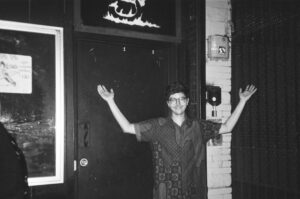 Maximilien Luc Proctor (France/US) is a French-American filmmaker, critic and curator. In addition to recording music in the band Two Nice Catholic Boys, he is the founder and co-editor of Ultra Dogme and the avant-garde instructor for Berlin’s Art-on-the-Run film school.
Maximilien Luc Proctor (France/US) is a French-American filmmaker, critic and curator. In addition to recording music in the band Two Nice Catholic Boys, he is the founder and co-editor of Ultra Dogme and the avant-garde instructor for Berlin’s Art-on-the-Run film school.
 Pedro Maia (Portugal) is a filmmaker based in Berlin. He works predominantly with 16mm and 8mm film, pushing the boundaries between analog, digital and live cinema. Extending the limits and aesthetic of analog medium by manipulating the raw materials, challenging the traditional process and continually expanding the visual and technological heritage of classic film methods. His work has been presented and exhibited at renowned film festivals, institutions and galleries including The Barbican Center, Serralves Museum, The Centre Pompidou, Tokyo Contemporary Art Museum, Armenian Centre for Contemporary Experimental Art, MACBA Barcelona, Edinburgh International Film Festival, Mostra São Paulo, Curtas Vila do Conde, Indie Lisboa, amongst others.
Pedro Maia (Portugal) is a filmmaker based in Berlin. He works predominantly with 16mm and 8mm film, pushing the boundaries between analog, digital and live cinema. Extending the limits and aesthetic of analog medium by manipulating the raw materials, challenging the traditional process and continually expanding the visual and technological heritage of classic film methods. His work has been presented and exhibited at renowned film festivals, institutions and galleries including The Barbican Center, Serralves Museum, The Centre Pompidou, Tokyo Contemporary Art Museum, Armenian Centre for Contemporary Experimental Art, MACBA Barcelona, Edinburgh International Film Festival, Mostra São Paulo, Curtas Vila do Conde, Indie Lisboa, amongst others.
 Sky Hopinka is a Ho-Chunk Nation national and descendant of the Pechanga Band of Luiseño Indians. He was born and raised in Ferndale, Washington and spent a number of years in Palm Springs and Riverside, California; Portland, Oregon and Milwaukee, Wisconsin. In Portland he studied and taught Chinuk Wawa, a language indigenous to the Lower Columbia River Basin. His work centers around personal positions of homeland and landscape, designs of language and the facets of culture contained within. He received his BA from Portland State University in Liberal Arts and his MFA in Film, Video, Animation, and New Genres from the University of Wisconsin-Milwaukee.
Sky Hopinka is a Ho-Chunk Nation national and descendant of the Pechanga Band of Luiseño Indians. He was born and raised in Ferndale, Washington and spent a number of years in Palm Springs and Riverside, California; Portland, Oregon and Milwaukee, Wisconsin. In Portland he studied and taught Chinuk Wawa, a language indigenous to the Lower Columbia River Basin. His work centers around personal positions of homeland and landscape, designs of language and the facets of culture contained within. He received his BA from Portland State University in Liberal Arts and his MFA in Film, Video, Animation, and New Genres from the University of Wisconsin-Milwaukee.
